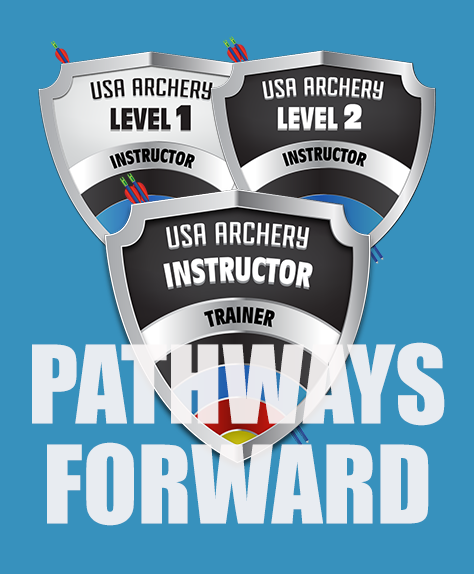Challenges with and Solutions for Level I & II USA Archery Instructor Training Programs
Level I USA Archery (USAA) Instructors arguably have the most significant impact on the success and viability of archery in the United States. Camps, youth programs, Y USA, local recreation departments, and other seasonal programs stack their archery programs with Level I USAA Instructors to meet accreditation standards and minimum risk management practices. It is my perception that Level I Instructors are the face of archery in the USA. I estimate more people explore archery each year under the guidance of Level I Instructors compared to levels II, III, IV, or V instructors and coaches. Therefore, the USAA instructor training system must prioritize Level I training course design and delivery to optimize the inherent broad reach of Level I Instructors. Furthermore, USAA must use an assessment tool to measure the efficacy of certification course design and delivery by observing the quality of instruction performed by recent graduates. This paper outlines structural (versus content) elements of Level I and II certification that, in my opinion, need immediate attention. Included in this paper are 16 specific and solution-oriented recommendations for how to adjust the certification structure to improve outcomes.
Some of the more significant problems outlined in this paper revolve around the current dynamic that allows people who have no experience in archery to skip Level I and go directly to Level II. Furthermore, Level II Instructors are permitted to take a designed-to-pass online exam and become Level I and Level II Instructor Trainers days later. In other words, someone who has no experience with archery and perhaps no experience with instruction or coaching could go immediately to training other archery instructors in a matter of a few days. I am concerned that people with no experience can train Level I and II candidates who also likely have no experience. This allowance will impact the strength of Level III and IV candidates, diminish the quality of experience first-time archers have with underperforming instructors and decrease the sport’s viability over time.
The purpose of this paper is to organize observations from 16 years of conducting archery instructor certification programs in a way that USAA might find helpful when assessing the efficacy of the Level I and level II certification models. I write this paper in the spirit of collaboration, and wish to acknowledge the immense improvements at all levels of certification thanks to the leadership of Guy Krueger. I would not be where I am today as a coach if it were not for Guy or KiSik Lee. Thank you both for your support.
Click the link below for the full paper with a table showing across sport comparisons of entry-level instructor certification requirements, images showing the level of form Level I candidates typically arrive with, and 16 solutions for how to improve the structure.

